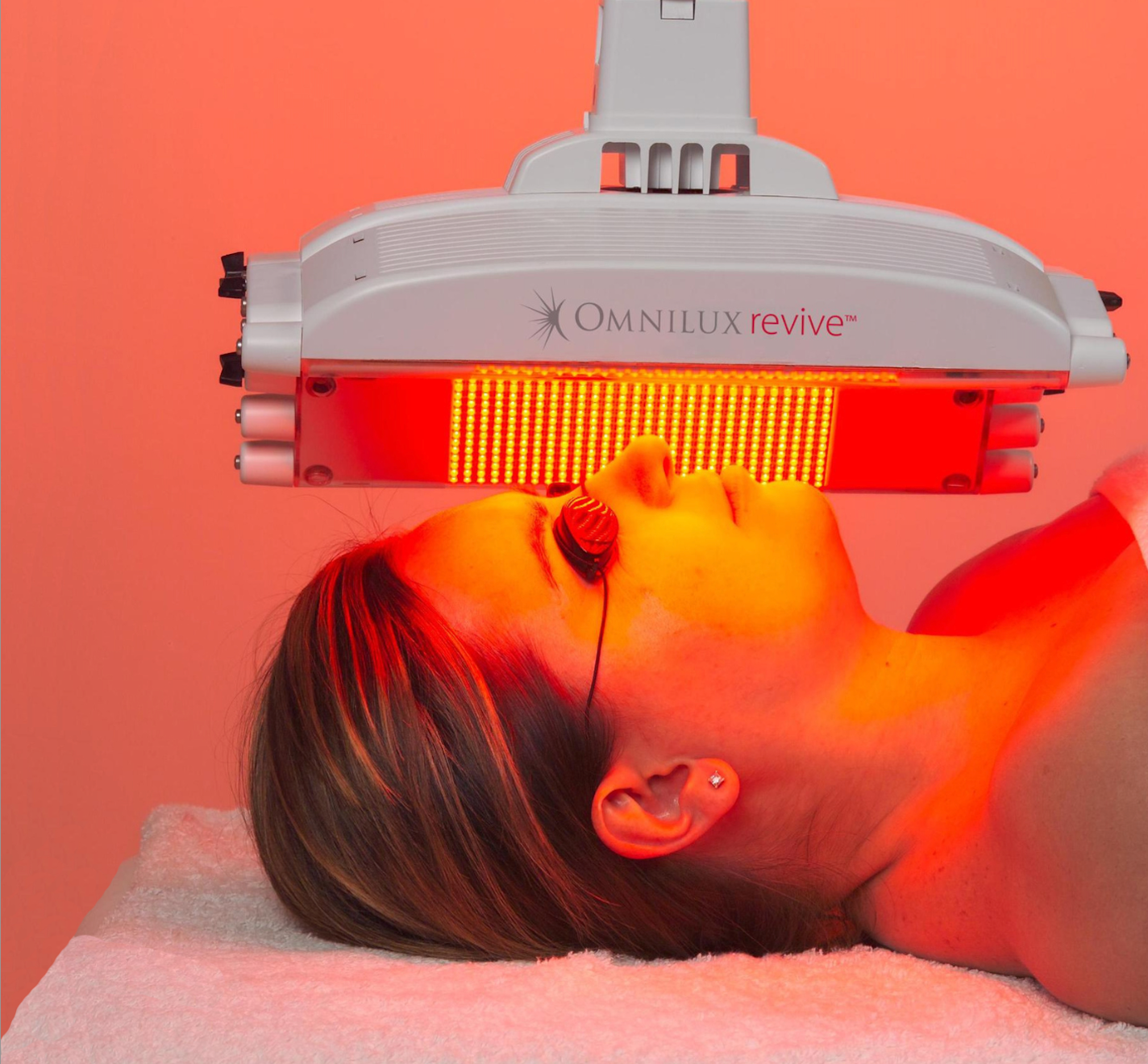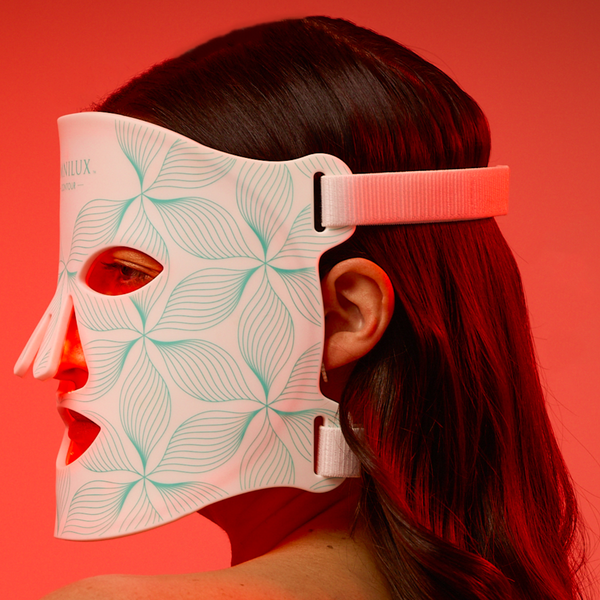
Enhancing In-Clinic Skin Treatments with LED Light Therapy
Non-surgical treatments have become the top choice in the modern cosmetics industry, attracting clients for their enhanced safety and the joy of avoiding a date with a scalpel. As we navigate the realm of in-office aesthetic treatments, many clients still yearn for that magical touch without surgical intervention.
Entering from stage left: LED light therapy, the unsung hero of skincare. While in-office treatments do offer improvements, LED light therapy steps in like a reliable sidekick with staying power, providing complementary benefits and making it an invaluable tool for skincare professionals.
Light Therapy with Today’s Leading Aesthetic Treatments
Skincare professionals are constantly seeking innovations to improve their clients’ results. LED light therapy is at the top of the list, as it complements the industry's leading aesthetic treatments with significantly reduced downtime and even more radiant results.
According to aesthetic medicine doctor, Dr. Hany Abi Ghosn, “LED light therapy is a wonderful and safe treatment to use alongside a variety of cosmetic procedures like microneedling, lasers, fillers, and Botox…Thanks to its healing and regenerative properties, LED light therapy can not only reduce downtime following aesthetics procedures but also provide additional skin rejuvenating benefits like reducing redness and irritation.”
LED Light Therapy and Botox
Botox injections have long reigned as champs of in-office wrinkle treatment. These little shots of neurotoxins swoop in to save the day from the tyranny of repeated facial expressions. But, let's face it, they're a heavyweight in the treatment arena, and can throw a side effect or two, making your clients feel like they've gone a few rounds in the ring.
Dr. Hany notes, “A more invasive treatment like Botox, which involves injecting the facial muscles to treat fine lines and wrinkles, can sometimes come with unwanted side effects such as bruising and swelling. I like to use particularly red and near-infrared light, like Omnilux Contour Face, to help significantly reduce the downtime and side effects.”
Reducing Side Effects with LED Light Therapy
How exactly does LED light therapy curb Botox side effects? This comes down to the healing and anti-inflammatory effects of red and near-infrared light. These wavelengths will trigger increased blood flow to the skin, flooding it with oxygen and nutrients, aiding in the reduction of redness, swelling, and bruising.
But that's not all! LED light therapy goes beyond the call of duty by boosting collagen and elastin production, providing a gradual improvement in the skin’s elasticity, uniformity, and overall appearance. In boosting the production of these essential proteins, LED therapy can reduce fine lines and wrinkles, ultimately supporting and enhancing the results of Botox injections. In a clinical study, the Omnilux LED system provided a significant improvement in periorbital wrinkles in 81% of patients.
LED Light Therapy after Botox
Low-level light therapy, like the Omnilux treatments, is a trusted method you can call in post-Botox - just give it 72 hours so as not to impact possible Botox diffusion. According to Dr Hany, it's the perfect tag team for maintaining a client's youthful glow.
Enhanced Microneedling Results with LED Light Therapy
Microneedling offers notable benefits for far-ranging skin concerns, making it a sought-after treatment today. As Dr. Hany notes, “LED light therapy pairs wonderfully with microneedling because it can help reduce inflammation, speed the skin's healing process, and encourage even more collagen production.”
Many clients experience redness and swelling for 24-48 hours after microneedling. LED light therapy can assuage these effects while enhancing microneedling’s benefits for:
- Acne scars
- Enlarged pores
- Line lines
- Hyperpigmentation
- Poor skin texture
- Sun damage
Other Cosmetic Treatments to Pair with LED Light Therapy
LED light therapy can be safely paired with an array of other minimally invasive, in-office treatments, including:
- Laser hair removal: LED light therapy calms swelling and redness after laser hair removal by accelerating the skin healing process. Just hold off for 48 hours to avoid any further irritation
- Facials: Picture LED light therapy as the backstage crew for your facial, boosting collagen and elastin production to make those targeted facials shine even brighter.
- Microdermabrasion: Ease the post-microdermabrasion redness and swelling with the gentle touch of LED light therapy. It can even be used in between sessions to maintain and enhance the results.
- Facial fillers: Reduce redness, swelling, and bruising that often accompanies facial fillers. It will not damage the filler; instead, it's like a skincare encore, prolonging the results of the treatments.
LED Light Therapy for a Faster Recovery
Recovery times are a key concern amongst cosmetic patients. When downtime is required after treatment, clients may play hooky from work or struggle with day-to-day tasks. Even minor side effects, like redness, can turn every day events into a no-show for some.
LED therapy can help assuage these concerns by speeding up the recovery process. By dialing down inflammation, cranking up collagen production, and turbocharging blood circulation, LED light therapy can:
- Fast-track patients back to work post-procedures
- Boost patient satisfaction by providing longer-lasting results.
- Allow patients to confidently RSVP post-office visit, without fear of lingering redness or bruising. The show must go on!
Safety Considerations for LED Therapy with In-Office Cosmetic Treatments
Dr. Hany emphasizes that "LED light therapy is typically very safe to use alongside more aggressive skin treatments. Practitioners should always consult with their patients to ensure that they are not taking any medications that cause photosensitivity before recommending LED treatments.”
Watch out for these medications that can trigger photosensitivity:
- Topical retinoids and benzoyl peroxide
- Antibiotics, including doxycycline and tetracycline
- Tricyclic antidepressants, including amitriptyline and doxepin
- Antifungals, including griseofulvin
- Blood pressure medications, including hydrochlorothiazide
- Benzocaine
- Cholesterol medications, including simvastatin, atorvastatin, and lovastatin
- Neuroleptic medications, including chlorpromazine and perphenazine
Pro tip from Dr. Hany: Advise clients to limit sun exposure and consistently apply sunscreen post-LED sessions. Safety first, glow second!
Priming Patients for Success
Help your clients beyond your clinic's walls with at-home LED devices. It's like a spa day in your client's living room, fostering long-term skin health and bridging the gap between in-office treatments.
The recommended regimen for Omnilux at-home LED light therapy masks is three to five times weekly in 10-minute sessions for four to six weeks, followed by regular maintenance treatments.
Looking Ahead to Brighter Client Outcomes
LED light therapy is gaining momentum as a skincare mainstay. In combination with potent in-office treatments, it ushers in an era of swift recovery, fewer side effects, and jaw-dropping results. Dr Hany foresees the rise of at-home LED devices, especially the Omnilux Contour range, becoming the the skincare professional's go-to recommendation post-treatment:
“I believe LED has already proven to be a powerful addition to many beauty routines, whether at home or in aesthetics clinics. However, with the introduction of at-home use LED devices, such as the Omnilux Contour range, I can only imagine these treatments will become even more widely recommended by skincare professionals to patients post microneedling, lasers, filler, and Botox treatments."


